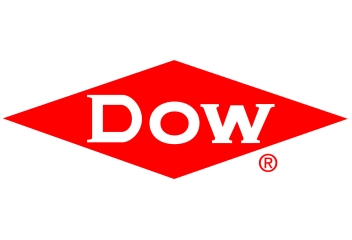Writer
Word Count:778
The UCSB Materials Research Laboratory was recently recognized by the Dow Chemical Company for their research in the sciences, and has received up to $15 million to establish a research institute with Dow that will encourage collaboration between the two groups.
The Dow Materials Institute aims to study materials that can make technological and scientific breakthroughs and bring benefits to the next generation in the fields including catalysis, polymers, materials science, separations, mass transport, electrochemistry and new materials for applications in several areas, as stated on Dow’s website.
UCSB is among the 11 beneficiaries of the total $25 million investment in partnership. Other participants include UC Berkeley, the California Institute of Technology and Georgia Institute of Technology. Each university partnership has been designed to build off of its unique strengths- its faculty, facilities, institutes and infrastructure.
The Dow Materials Institute at UCSB will be housed in the MRL, which is funded by the National Science Foundation. According to www.mrl.ucsb.edu, the MRL is “an innovation engine for discoveries in new materials and home to a scientific and engineering community that creates new collective knowledge and fosters the next generation of scientific leaders.”
“This is a big validation of our campus by Dow. Dow has very carefully selected the best departments and some of the best universities to cooperate with,” said Michael Doherty, the Chair of Chemical Engineering at UCSB. “It is not an accident that Dow is choosing to spend many millions of dollars. The top department has top students, top faculty, the best resources, best ideas, and best equipment. They [Dow] want to invest in something that is already a success.”
According to Theresa Kotanchek, the Vice President of Sustainable Technologies and Innovation Sourcing at Dow, one of the company’s reason to choose UCSB as a collaborative partner was considering its national ranking.
The National Academy Ranking placed UCSB as number two in Chemical Engineering, and number one in Materials Science and Engineering.
“But what’s the most significant is the cooperation we see on the campus,” Kotanchek said in a recent press release. “The problems we face are not ones that a chemist, a materials scientist, a chemical engineer, or a physicist can solve alone.”
The Dow Chemical Company especially values the interdisciplinary cooperation.
“We are known for interdisciplinary research, and students who work in an interdisciplinary setting are extremely good employees in a research organization like Dow,” Doherty said.
The enormous funding is not only a monumental opportunity for faculty and students at UCSB, but also a great propeller to Dow’s development.
“There is a big advantage on both sides. Corporate research tends to have time scale of one to five years. University research tends to have time scale of five to 10 years. Very few corporations can afford such long time. So the good thing about this is Dow can invest in us to be thinking about things 10 years away,” Doherty said.
The visionary initiative brings about a win-win situation. With Dow’s resources and the aptitude of the faculty and students at UCSB, research and talents can be optimized in the pursuit of breakthrough ideas.
“Our relationship with Dow is a long-term and conceptual cooperation. They help us to work in a certain new direction that will lead to some good things to the society. And we have the creative students and faculty, and time needed to generate the breakthroughs that will lead to new technologies and hopefully a better and sustainable world,” Doherty said.
The brand new partnership also brings along more internship opportunities for students as well as additional $2 million for doctoral fellowships, which will fully pay for two excellent PhD students per year in the chemical engineering department. But Dow will bring more than funding and research opportunities to UCSB.
“It [the award] not only allows us to support applied research that builds up on the fundamental findings, but also allows us to train our students in a much more appropriate model,” Craig J. Hawker, director of the MRL and professor of materials, said in a press release. “Giving students exposure to industry where many of them will actually find an employment after they leave UCSB is exactly what we need to do.”
With the cooperation among Dow’s top scientists and engineers and UCSB’s prominent faculty members and promising students from chemistry, chemical engineering, and materials department, the critical breakthroughs in materials research and development is highly anticipated.
“We are incredibly excited about the future in front of us and particularly around the ability to educate and train our future scientists and engineers,” Kotanchek said.












Comments are closed.